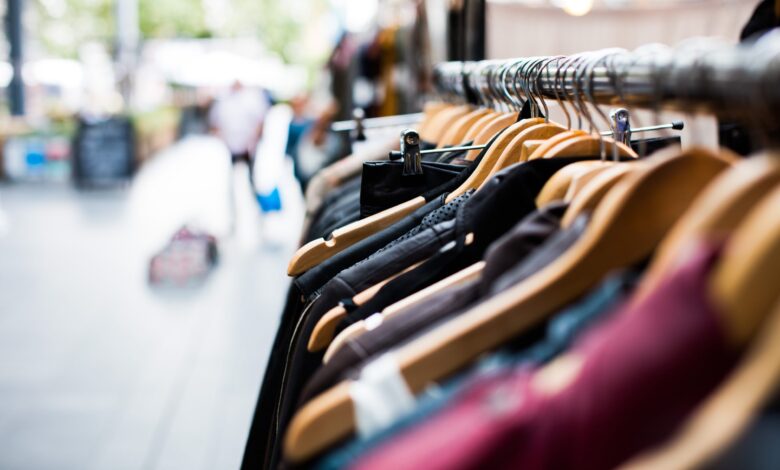
Sustainable fashion is quickly becoming the future of the fashion industry. With an increased focus on environmental sustainability, more and more fashion companies are turning to eco-friendly fabrics, production processes, and packaging solutions.
Sustainable fashion is not only about protecting the environment, but also about creating a better future for the fashion industry. By investing in sustainable fashion, companies are making sure that their products are produced ethically and responsibly, while also helping to reduce waste and pollution. Sustainable fashion is the way forward for the fashion industry, and it is here to stay.
The benefits of sustainable fashion

Sustainable fashion has become a hot topic in the fashion industry as people work to find better ways to reduce their environmental impact. The advantages of sustainable fashion are numerous, from reducing our carbon footprint and preserving resources to creating jobs in developing countries and promoting safer working conditions. Sustainable fashion is the future of the industry, and if we start investing in it now, it will be the key to restoring our planet and preserving the livelihoods of people worldwide.
The challenges of sustainable fashion

Sustainable fashion is rapidly gaining traction as the future of the fashion industry, but the journey isn’t without its challenges. From ensuring ethical textile production and the use of eco-friendly materials, to meeting modern market trends and adapting to rapidly changing consumer needs, creating a truly sustainable fashion industry takes a well-rounded strategy.
The fashion industry has long been one of the most wasteful industries in the world, and sustainable fashion seeks to address that. From factories to stores and all points in between, the fashion industry must shift towards sustainability in order to continue to be successful in the coming years.
The impact of sustainable fashion on the environment

Sustainable fashion is the future of the industry – and its impact on the environment can no longer be ignored. As more people become aware of the devastating effects of fast fashion and climate change, companies and designers are looking for ways to reduce their carbon footprint, increase their use of recyclable fabrics and make their product sourcing more sustainable.
This is great news for the planet – but it means that companies need to be adaptable and innovative, as sustainable fashion is constantly evolving. From upcycling trends to using natural fabrics and dyes, the future of sustainable fashion looks brighter than ever.
The impact of sustainable fashion on the economy

Sustainable fashion is quickly becoming the future of the industry – having a major impact on the global economy. This eco-friendly approach to clothing production focuses on creating garments and accessories that are both a good investment for customers, and a win for the environment. Through the use of environmentally-friendly manufacturing techniques, sustainable fashion aims to reduce carbon emissions, decrease water and energy consumption, and eliminate hazardous materials from being used in production.
Not only will this help to protect the planet, but it also has the potential to bring serious economic benefits to a global scale.
The impact of sustainable fashion on consumers

As the apparel industry continues to grow, the importance of sustainable fashion is becoming more pronounced. Consumers are increasingly taking notice of the impact their purchases have on the environment, and they are looking for companies that have adopted environmentally conscious practices. Sustainable fashion has the potential to revolutionize the industry, offering consumers an opportunity to make responsible choices and express their values through their purchases.
As manufacturers focus on sustainable manufacturing processes, consumers will be able to make informed decisions while supporting businesses that prioritize environmental stewardship. The future of fashion lies in its sustainability — and we, as consumers, can all make a difference.
The future of sustainable fashion
As the world increasingly focuses on sustainability, the future of sustainable fashion is a heavily discussed topic. Our impact on the environment is a growing concern, and more and more, people are asking how they can be sure that the apparel they buy won’t be part of the pollution problem. Sustainable fashion, which requires minimal energy, raw materials and waste, is helping to address this issue, and it looks like it will become increasingly important for the fashion industry in the near future.
From the use of natural, renewable materials to innovative upcycling techniques, sustainable fashion is finding a way to make sure that the clothes you buy don’t cost the world in terms of energy and natural resources. As the industry moves forward, it will be interesting to see how sustainable fashion continues to evolve and change the industry.
Final Touch
Sustainable fashion is the future of the industry, with an increasing focus on reducing environmental impact and creating a more ethical fashion system. Sustainable fashion is about creating garments and accessories with a lower environmental impact, while also considering the social and economic impact of the fashion industry. It is about creating fashion that is made to last, with materials that are ethically sourced and manufactured, and with production processes that are as sustainable as possible.
Sustainable fashion is the way forward for the fashion industry and a key part of creating a better future for all.
FAQ
Is the sustainable fashion industry growing?
Yes, the sustainable fashion industry is growing. More and more fashion brands are focusing on sustainability and using eco-friendly materials, such as organic cotton, recycled fabrics, and natural dyes. Additionally, many fashion companies are taking steps to reduce their environmental impact, such as using renewable energy sources and reducing water and waste.
What is the value of the sustainable fashion industry?
The value of the sustainable fashion industry is that it provides fashion solutions that are more environmentally friendly, socially responsible, and economically viable. It also encourages the use of renewable and recycled materials, as well as ethical labor practices. Sustainable fashion also helps to reduce the environmental impact of the fashion industry, while creating jobs and economic opportunities for those involved.
What is the growth of sustainable clothing companies?
The growth of sustainable clothing companies has been significant in recent years, as more and more people are becoming aware of the environmental and social impacts of traditional fashion production. Sustainable clothing companies are focused on reducing their environmental footprint by using eco-friendly materials, ethical production practices, and sustainable business models. They are also increasingly focused on creating quality, stylish clothing that is both affordable and sustainable.
What is the market demand for sustainable fashion?
The market demand for sustainable fashion is growing rapidly as more people become aware of the environmental and social impacts of the fashion industry. Consumers are increasingly looking for sustainable fashion options that are made from natural, recycled, and/or upcycled materials, and that are produced in a way that is socially and environmentally responsible.
What is the projected growth of sustainable fashion?
The projected growth of sustainable fashion is expected to be significant over the next few years, with the market size estimated to reach $128.7 billion by 2025.
How important is sustainability in fashion industry?
Sustainability is extremely important in the fashion industry, as it is a major contributor to environmental pollution and resource depletion. Sustainable fashion practices can help reduce the environmental impact of the industry, while also providing economic and social benefits.
How will the fashion industry change in the future?
The fashion industry is likely to continue to evolve in the future, with more emphasis on sustainability, technology, and personalization. Consumers are increasingly demanding more ethical and eco-friendly clothing, and fashion companies are responding with more sustainable materials and production processes. Technology is also playing a larger role in the industry, with the use of 3D printing, artificial intelligence, and virtual reality to create new designs. Additionally, personalization is becoming more popular, with customers able to customize their clothing to fit their individual style.





